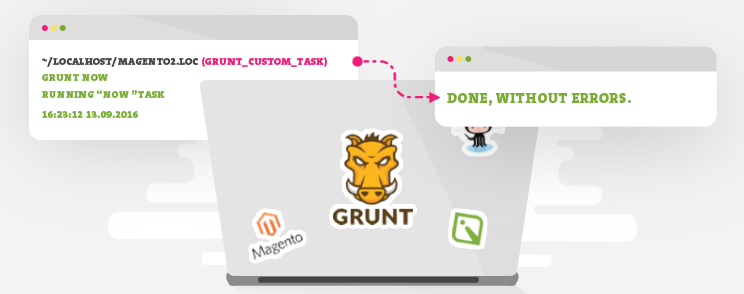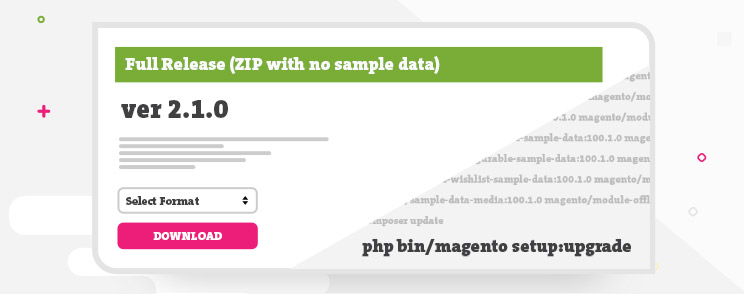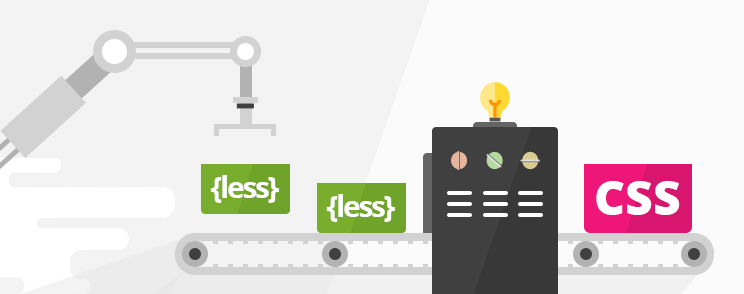Many times we need to show some sort of information in modal overlay when customer comes to the site.
We can use it for many kind of purposes like newsletter subscription form, coupon codes or just some
general information.
In this article I’ll show you how to create the most basic functionality around this.
Magento 2
Javascript Bundling in Magento 2
Javascript bundling is a technique that groups separate files in order to reduce the number of HTTP requests that are required to load a page. Bundling is commonly used in today’s “module-based” development where some functionalities are basically split into Modules (roughly explained). For loading modules, we usually use some of popular module loaders such as rollup.js or RequireJS (which is Magento’s weapon of choice).
Read moreConfigure Origin shielding and timeout settings in Fastly
In the previous article I wrote on how to register a Fastly account and install & configure Fastly module for Magento 2 in order to improve your store performance.
In this article I’m going to talk about how to fine tune Fastly’s service performance by configuring Origin shielding and timeout settings.
Read moreDon’t Mess with the Magento 2 Checkout
Hello! Do you hate editing Magento Checkout? I know how you feel… 😀
The checkout in Magento 2 is built up from a series of Knockout JS components which are then rendered using the Knockout JS templating system. Magneto 2 defines each one of these components and their parent/child relationship in a large XML file which can be extended or overridden in your own theme or module.
Read moreHow to improve your Magento store performance by using Fastly
Are you a Magento store owner whos looking for a way to improve your user’s experience in terms of speed – try Fastly.
Read moreCreate Admin Menu Item in Magento 2
When it comes to Magento customization, every now and then, there’s a need for a custom configuration option that needs to be placed somewhere in the administration menu. Magento 2 comes with well organized admin menu, but what if newly created configuration option doesn’t fit anywhere?
Read moreMagento, where to start?
Hello fellow developers! You always wanted to learn Magento and get a job as a Junior Magento Developer? Read on.
Read moreMagento Enablement training in Paris – overview by Inchoo
Magento often organizes Partner Enablement Events, such as live demos, webinars and quick start trainings. While we participated in a number of such demos and webinars, we’ve never been a part of an on-site training for sales and business development staff aimed at solution and technology partners. This changed last week in France, and here’s our overview of what happened in Paris.
Read moreOverriding classes in Magento 2
Compared to its previous version, Magento 2 came out with a new concept of dependency injection where classes inject dependencies (different objects) for an object instead of that object manually creating them internally. That way overriding and manipulating with classes is much easier and allows us more ways of extending the native functionalities.
Read moreAdd category attribute programmatically in Magento 2
Despite the good amount of attributes offered in Magento by default, there is often a need to add some new ones to the system for a particular EAV entity. Today I’m going to show you how to programmatically add a new category attribute.
Read moreMagento 2 custom widget
In one of our previous articles we learned how to create a widget. Now we will see how we can create a custom one, or even better, how to extend the core one. For this example I picked default catalog product listing widget that I will extend with sorting fields for better customization of this widget.
Read moreFile upload in Magento 2 store configuration
One of the best parts in Magento is its admin interface. There is support for all kinds of input types (text fields, radio buttons, dropdowns, multiple selects, etc.), that can be stored in various ways (plain, encrypted, serialized), and displayed in numerous ways (grids, forms, simple fields, images).
What makes Magento great is the possibility to extend this default interface (especially store configuration part), and add our own fields easily. Let’s extend it with a custom file upload field.
Read moreMagento 2 UI components and listener
In this short and simple example we will explain how to create listener in Magento 2 UI component. We will explain it on built in Magento 2 UI component Columns which use component Magento_Ui/js/grid/listing (part of admin grid interface).
Read moreWe’ve developed a Croatian Language Pack for Magento 2
eCommerce is rapidly increasing in the world, but Croatian market was a little behind that trend. Why? Maybe it’s our distrustful nature to buy something online. Who knows. But the good thing is – we at Croatia are slowly but surely discovering the benefits of online shopping. Both as consumers and as shop owners.
Wether you are big or small, on Magento or on some other platform, goal is the same. Increasing sales and keeping customers happy and loyal. One of the ways to achieve that is by shop localization.
Read moreHow to keep your CMS blocks organized (and not go insane)
Head on over to Magento dashboard in your store and take a look at CMS blocks. How many CMS blocks have you got? Can you tell which of the blocks are being used on site and which are currently not active or can be safely removed? Can you pick a random CMS block and instantly know what it is and where to find it on site? In this article we’re going to cover a powerful way of organizing, searching and filtering CMS blocks by simply naming them in a specific way. And the best part is that it works out of the box in vanilla Magento without any extensions.
Read moreMagento 2: How to add new search engine like Solr or Elasticsearch
Magento 2 Community Edition comes with support for only MySQL search engine, but some projects require better or more adjustable search engine in order to increase sales or conversion rate.
In this situation we are implementing Solr or Elasticsearch search engine.
Extending Pimcore with plugins
After half a year we are back on Pimcore development. Since last time, Pimcore 4 has been released and it’s already in 4.3 version. I have been writing about portlets and now it is time to go much deeper in extending Pimcore. First of all, best reference for Pimcore development is their own documentation, you can find it at https://www.pimcore.org/wiki/. Pimcore can be extended with plugins, or by writing code in website folder, but we’ll cover plugins.
Read moreHow to create a custom Grunt task in Magento 2
With almost 10 months after Magento 2 has been officially launched, Google has indexed a decent number of articles related to creating themes, fallback mechanisms and LESS compiling. Great job, community! =). But there was not a single one on how to create your own Grunt task. =(
Read moreCustom API for Magento 2
We have already went through on how to configure integration and utilize Magento apis. But let’s see how to make our own module with custom API calls.
Read moreRepository pattern in Magento 2
In case you haven’t noticed, Magento 2 recently marked all model CRUD operations as deprecated, in favor of following repository pattern. This article will be a short overview for those who are new to this concept.
Read moreHow to create a basic module in Magento 2
We’re going to build a very simple module in Magento 2. When finished, the module’s output will say “Hello world!” in the block content on a custom frontend route.
Read moreMagento 2 API usage with examples
Magento 2 supports REST (Representational State Transfer) and SOAP (Simple Object Access Protocol), much like the old version of Magento we were used to. Official documentation is mostly based on raw curl request without examples in some specific language. PHP is what we do and there will be many people using it as well, so we tried to give you real PHP examples of how to connect and use Magento 2 API.
Read moreWorking with CSS in your first Magento 2 project
So, you’ve finally managed to create your new theme in Magento 2. After a few hours of swearing and sweating, you’ve successfully created all necessary files, defined fallback to Luma (you can blame Luma for all the mess that will happen later on), registered your theme within the system, activated it in the Magento Administration…aaaand…you are ready to go!
But, what now?
Read moreExtending Magento 2 default JS components
Since Magento 2 is out for quite some time now and new projects based on the platform are rapidly approaching, there is no doubt that we, as developers, need to be adequately prepared for the challenge.
In this post I will demonstrate how to deal with platform’s default javascript components (widget instances). More precisely, a javascript component responsible for the site main navigation functioning. If you’re interested, just keep reading.
Read moreHow to update your Magento 2 installation
In my previous article How To Install Magento 2, I explained how to install Magento 2, now I will explain how to update it.
Again, similarly like there are multiple ways to install it, there are multiple ways to update it. Go figure. Actually, you don’t have to go figure, just read on 🙂
Read moreUse browsersync in Magento frontend development workflow
As a frontend developer today you have tons of tools at your disposal. In everyday use you will need at least one tool which will be assigned to watch, process, generate, clean, minimize code. I will try to convince you to start using one which can be great assistant in modern frontend workflow. I will talk about Browsersync.io.
Read moreEvaluating and improving accessibility of eCommerce websites
Sir Tim Berners-Lee once said that “Access (to the Web) by everyone regardless of disability is an essential aspect”. We, as developers, always strive to create a website which looks and feels good on a wide range of devices, resolutions, operating systems, network speeds, etc., but how often do we consider designing or creating a website for a wide range of people? In this article, we’re going to cover some basic frontend principles of improving accessibility and what that means in context of a Magento website.
Read moreHow to install Magento 2
When installing Magento 2 on your machine you should ask yourself:
- Do I need more problems in my life?
If the answer is Yes, continue reading.
Read moreCSS preprocessing in Magento 2
Magento 2 has been out in the wild for some time now. Most developers I know haven’t worked on Magento 2 project yet. However, most of them installed it and played around with it, learning and experimenting.
From the comments on github and social media, and from chats with developers, conclusion is that Magento 2 Frontend has a lot of issues, one being the most important: CSS preprocessing.
Read moreAdd qty increment buttons to product page
As you probably know, Magento is using a plain text field to handle quantity on product page. This is the bulletproof solution – it is simple and covers all needs. But, sometimes, merchants want to use something more appealing, and many of them settle for quantity increment buttons (those + and – buttons next to the quantity input field). Adding this kind of behaviour will be the topic of this post.
Read more




























